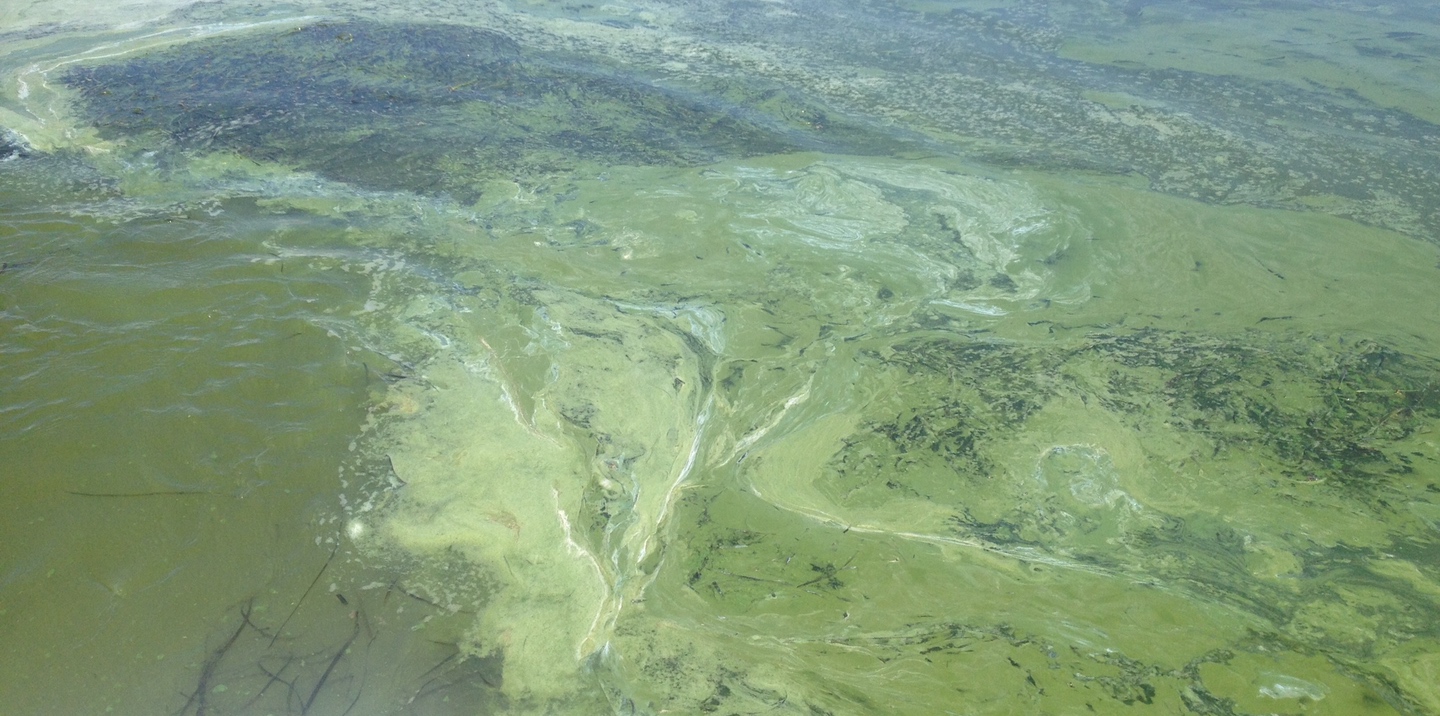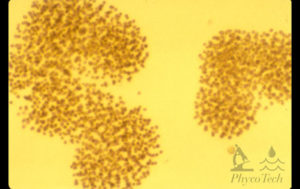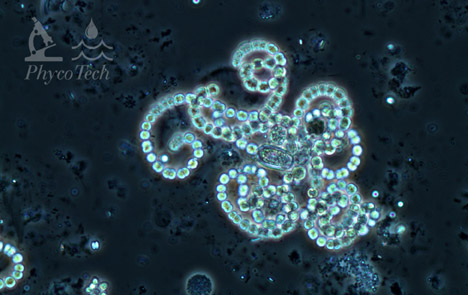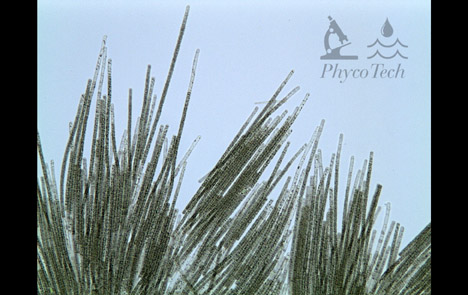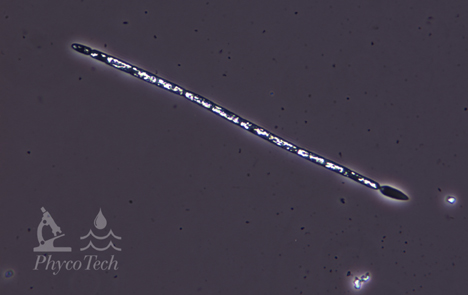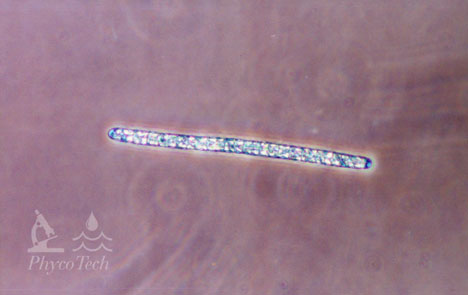Getting to Know Cyanobacteria: basics, blooms, toxins, and taxa
WHAT WILL I LEARN?
Get up to speed on cyanobacteria (a.k.a. blue-green algae) including a general overview, information on conditions which lead to blooms, details regarding cyanobacterial toxins, and a rundown of the main toxin-producing groups of cyanobacteria.
Getting to Know Cyanobacteria
Basics Blooms Toxins Taxa Taste/Odor
The Basics
The Basics
Cyanobacteria (blue-green algae) blooms have been occurring throughout the world for thousands of years. Cyanobacteria produce a number of nuisance compounds, including those that are toxic or cause severe taste-and-odor problems in drinking water supplies. Cyanobacterial toxins can make drinking water and recreational use of water unsafe. Animals die yearly as a result of cyanotoxins, and though human death is not common, many people experience symptoms indicative of cyanotoxin exposure. Very little is known about the long-term side affects of ingestion of cyanotoxins, so although there is a guideline set by WHO for safe concentrations, minimal concentrations could cause an effect over time.
Conditions affecting blooms
Nutrient Availability: Nutrients are a limiting factor for cyanobacteria populations. As long as the correct nutrients are in excess, they can grow until some other factor, often light or temperature, becomes limiting.
Competition: Ability to adapt to the environment is a big factors determining whether a bloom will form. Many blue-greens are less edible, have gas vacuoles that help them float, can sequester nutrients at the sediment water interface, or can fix dissolved nitrogen, any of which can give them a competitive advantage over other algae and lead to bloom formation.
Light Intensity: Since cyanobacteria are phytoplankton, light is important and different species thrive under different light intensities. If light is not extinguished by particles or color in the water, a bloom is more likely. Many blue-greens thrive under low light, and so may be favored unless light is nearly absent (such as in some high particulate reservoir systems).
Mixing: Mixing allows nutrients to be more evenly distributed and affects other aspects of water quality that in turn affect algal abundance and composition. Mixing can also move algae to depths with less light, limiting growth and survival. In general, blue-greens do better with less mixing (Cylindrospermopsis is one taxon that seems to do well in mixed systems, though).
Temperature: Surface water temperatures consistently above 28 degrees Celsius (82 degrees Fahrenheit) encourage blue-green blooms, although blooms may still occur in late fall (October, November) in the Northern U.S.
Species: The above factors influence different species very differently, because each species or taxon has a unique way of dealing with their environment. There are generalizations that apply to blooms and blue-green dominance, but there are exceptions in most cases. Algal bloom formation is a complicated ecological process.
Toxicity: Not all blue-greens are toxic, so while risk may be higher during a bloom, high biomass does not necessarily result in toxicity. Also, although many toxin producing algae produce taste and odor compounds, the presence or absence of geosmin or MIB is not a predictor of the presence of toxins.
Cyanotoxins
Major Classes of Toxins:
Hepatotoxins | microcystin | cylindrospermopsin
Neurotoxins | anatoxin | saxitoxin
Dermatotoxins | Lyngbyatoxin
BMAA | beta-n-methylamino-L-alanine
Major Taxa
Although there are about 50 toxigenic algal taxa, most fall into one of a handful of genera.
Microcystis
Anabaena
Aphanizomenon
Cylindrospermopsis
Oscillatoria
Major Taste and Odor Compounds
Geosmin
MIB (2-methylisoborneol)
Toxin and Taste-and-Odor Producing Cyanobacteria (list is not exhaustive)
[LYN, lyngbyatoxin-a; APL, aplysiatoxins; LPS, lipopolysaccharides; CYL, cylindrospermopsins; MC, microcystins; NOD, nodularins; ANA, anatoxins; BMAA, β-N-methylamino-L-alanine; NEO, neosaxitoxins; SAX, saxitoxins; GEOS, geosmin; MIB, 2-methylisoborneol]
Dermatoxins | Hepatotoxins | Neurotoxins | Tastes and Odors |
|||||||||
|---|---|---|---|---|---|---|---|---|---|---|---|---|
LYN | APL | LPS | CYL | MC | NOD | ANA | BMAA | NEO | SAX | GEOS | MIB |
|
| Cyanobacterial Genera | ||||||||||||
| Colonial/Filamentous | ||||||||||||
| Anabaena | X | X | X | X | X | X | X | X | ||||
| Anabaenopsis | X | X | ||||||||||
| Aphanizomenon | X | X | X | X | X | X | X | |||||
| Aphanocapsa | X | X | ||||||||||
| Cylindrospermopsis | X | X | X | X | ||||||||
| Fischerella | X | X | X | |||||||||
| Gloeotrichia | X | |||||||||||
| Haplosiphon | X | X | ||||||||||
| Hyella | X | X | X | |||||||||
| Lyngbya (Plectonema) | X | X | X | X | X | X | X | X | ||||
| Microcystis | X | X | X | |||||||||
| Nodularia | X | X | X | |||||||||
| Nostoc | X | X | X | X | X | |||||||
| Oscillatoria (Planktothrix) | X | X | X | X | X | X | X | X | X | |||
| Phormidium | X | X | X | X | X | |||||||
| Pseudanabaena | X | X | X | |||||||||
| Raphidiopsis | X | X | X | |||||||||
| Schizothrix | X | X | X | |||||||||
| Umezakia | X | X | ||||||||||
| Unicellular | ||||||||||||
| Synechococcus | X | X | X | X | X | |||||||
| Synechocystis | X | X | X | |||||||||
Table courtesy of Jennifer Graham, USGS
Other non-bluegreen freshwater toxic algae
Prymnesium parvum. A toxic Haptophyte
Pyrmnesium is primarily an issue for fisheries. It acts on exposed cells such as gill tissue and has not been linked directly with human or mammalian illness or death.
Reports, Publications, and other links
U.S. EPA
NOAA
NOAA Great Lakes Environmental Research Laboratory
USGS
World Health Organization
WATCH A STUDENT VIDEO ON CYANOS

